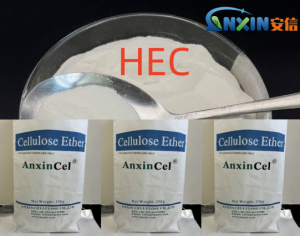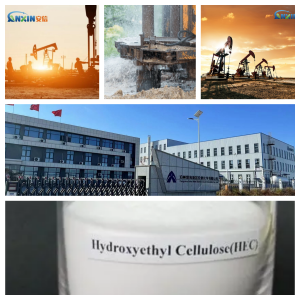Hydroxyethyl cellulose (HEC) is a nonionic, water-soluble polymer made from natural cellulose by introducing hydroxyethyl groups through an etherification reaction. In the oil and gas industry, HEC is widely used in drilling, completion, fracturing fluids, and oil and gas field chemical treatment processes, primarily as a thickener, rheology modifier, and suspending agent.
1. Chemical Properties and Characteristics of HEC
HEC molecules contain a large number of hydroxyl groups, enabling them to form stable colloidal solutions in water, exhibiting excellent rheological properties and water solubility. As a nonionic polymer, HEC is not significantly affected by electrolyte concentration and pH, maintaining stability even in highly salinized downhole environments. Furthermore, HEC exhibits excellent thickening, suspending, film-forming, and water-retention properties, making it an ideal functional additive for the oil and gas industry.
2. Applications in Drilling Fluids
During the drilling process, the properties of drilling fluids have a direct impact on drilling efficiency and wellbore stability. HEC, when added as a thickener to water-based drilling fluids, significantly increases the fluid’s viscosity and shear force, enhancing its ability to carry cuttings and preventing them from settling and clogging the wellbore. Furthermore, HEC forms a dense filter cake on the wellbore wall, reducing fluid loss and preventing wellbore collapse. Furthermore, HEC’s non-ionic properties make it suitable for use in freshwater, saltwater, and highly saline drilling systems.
3. Role in Completion and Fracturing Fluids
In completion fluids, HEC’s primary function is to adjust the fluid’s rheological properties, ensuring optimal viscosity during downhole operations, ensuring fluidity and preventing solid particle settling.
During fracturing operations, HEC, as the primary thickener in fracturing fluids, improves the fluid’s sand-carrying capacity, enabling proppant transport deep into fractures and forming effective flow channels. HEC fracturing fluids maintain excellent stability under high-temperature and high-pressure conditions and are easily degraded by oxidants and enzymes, enabling flowback after fracturing, minimizing reservoir damage.
4. Applications in Oil and Gas Field Chemical Treatment
In addition to drilling and fracturing, HEC is also used in oilfield chemicals such as corrosion inhibitor carriers, acidizing fluid thickeners, and mud modifiers. For example, in acidizing operations, HEC can be used to prepare acidizing thickening fluids, slowing the acid-rock reaction rate, increasing the penetration depth of the acid, and improving the acidizing effect.
5. Advantages of HEC
Good Salt Tolerance: Suitable for highly salinized downhole environments and not susceptible to salting out.
Strong Temperature Stability: Maintains excellent rheological properties even under moderate to high temperature conditions.
Environmentally Friendly: Derived from natural cellulose, HEC is easily degradable and meets environmental requirements.
Flexible Processing: Viscosity can be easily adjusted to meet different operating conditions by controlling the degree of substitution and molecular weight.
6. Precautions for Use:
Dispersibility: HEC must be thoroughly dry-mixed before dissolution to avoid agglomeration.
Shear Sensitivity: Excessive shearing can affect its thickening properties.
Temperature and pH Control: For high-temperature conditions, select a heat-resistant grade HEC. Avoid exposure to strong acids or bases, which can degrade its performance.
HEC is an indispensable multifunctional additive in the oil and gas industry. Its excellent thickening, suspension, and stabilization properties make it widely used in drilling, completion, fracturing, and chemical treatment processes. With the advancement of deep and ultra-deep well development and unconventional oil and gas resources, the performance requirements for HEC are becoming increasingly stringent. In the future, we will develop new HEC products that are resistant to high temperatures, high salinity, and readily degradable to meet the demands of complex operating conditions.
Post time: Aug-02-2025








